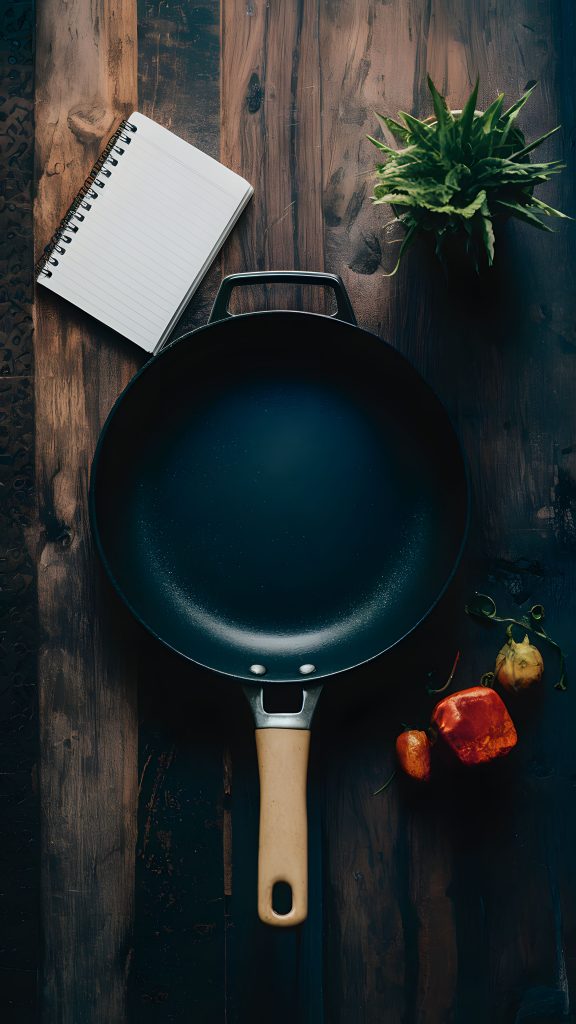
There’s a reason people get weirdly passionate about pans. Cookware isn’t just steel and iron — it’s the soul of your kitchen. It’s how your steak gets that restaurant-worthy crust, how your eggs slide out without sticking, how your sauces simmer like they’ve got all day. And right at the center of this never-ending tug-of-war is the age-old debate: carbon steel vs cast iron.
I’ve used both for years, and honestly? Each has its own rhythm, personality, and let’s be real — some maddening flaws too.
They May Look Alike, But They Don’t Play the Same Game
Sure, they both sit on your stove all black and rugged-looking. But carbon steel and cast iron are completely different beasts once you start cooking.
Cast iron
- Thick, dense, and unapologetically heavy
- Once it’s hot, it stays hot — amazing for chili, baked pasta, skillet cornbread
- It takes forever to heat, but when it gets there? Game on
Carbon steel
- Slimmer, lighter, more responsive
- Heats up quickly and cools just as fast
- Easy to move around — feels like a natural extension of your hand
That tiny difference in carbon content changes everything. Your kitchen ends up feeling different depending on which one you’re using. It’s like choosing between a slow-cooked stew and a sizzling stir-fry. Both are great, just… not at the same time.
What Works Better in Day-to-Day Cooking?
Let’s be honest — most weeknights, you just want to get dinner on the table. And carbon steel really shines here. It’s quick, light, and lets you flip, toss, and sauté without breaking a sweat. It’s the kind of kitchen equipment that works with you, not against you.
Cast iron, on the other hand, asks for more. A proper preheat. A bit of seasoning love. No sudden temperature changes. But when treated right? It delivers rich, layered flavors and an unbeatable sear.
If your kitchen rhythm looks like this:
- You move fast and hate waiting — carbon steel has your back
- You love building flavor low and slow — cast iron is where it’s at
- You want pans that go from stovetop to oven — either works, but cast iron is the king here
Cooking the Perfect Steak — A Tale of Two Pans
Let’s settle it — which pan makes the better steak?
If you’re chasing that dark, crusty exterior with a warm pink center, cast iron takes the win. Its heat retention means your steak won’t cool the pan down on contact. That crust forms instantly and doesn’t let go.
Carbon steel? It does a damn good job too, especially if you want more control over your heat. It’s easier to handle, and you can adjust temperatures on the fly. But you’ve gotta stay sharp — it reacts fast, and so does your steak.
The Health Angle — Nothing Weird Here
Forget non-stick coatings and mystery materials. This is old-school kitchen equipment that doesn’t mess with your food.
On the health front:
- Both add a little iron to your food — handy if you’re low
- Not great with acidic dishes — tomato sauces can strip seasoning
- No chemicals, no coatings, no toxins
Keep them seasoned, and they’ll reward you. It’s not hard. Just oil, heat, and a little time. Treat them right and you won’t need a non-stick pan ever again.
So, What Belongs in Your Kitchen?
Honestly, both. I use carbon steel when I want something fast, light, and responsive. It feels like kitchen equipment that grew up in a busy bistro — sharp, efficient, no time for drama.
But when I want that rich, deep, cozy kind of cooking — like I’m channeling generations of grandmas — I pull out the cast iron.
Your kitchen deserves tools that match how you cook. And whether it’s a perfectly seasoned cast iron skillet or a slick, agile carbon steel pan, both can stick around for a lifetime — or three — if you treat them well. Just don’t soak them. Seriously. Don’t.